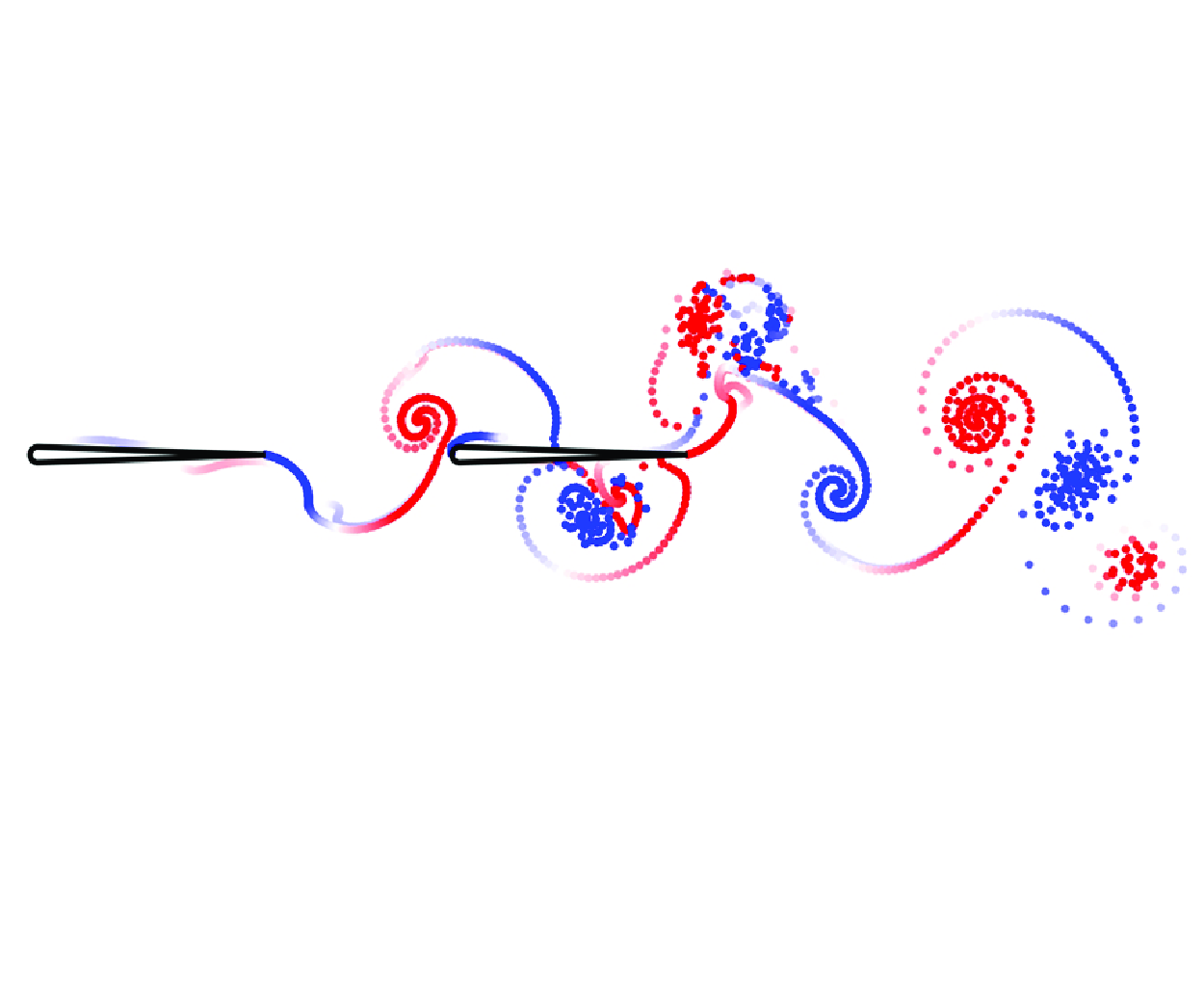No CrossRef data available.
Published online by Cambridge University Press: 11 June 2025

We present new unconstrained simulations and constrained experiments of a pair of pitching hydrofoils in a leader–follower in-line arrangement. Free-swimming simulations with matched pitching amplitudes show self-organisation into stable formations at a constant gap distance without any control. Over a wide range of phase synchronisation, amplitude and Lighthill number typical of biology, we discover that the stable gap distance scales with the actual wake wavelength of an isolated foil rather than the nominal wake wavelength. A scaling law for the actual wake wavelength is derived and shown to collapse data across a wide Reynolds number range of  $200 \leqslant Re \leqslant 59\,000$. Additionally, vortex analysis uncovers that the leader’s wake wavelength-to-chord ratio,
$200 \leqslant Re \leqslant 59\,000$. Additionally, vortex analysis uncovers that the leader’s wake wavelength-to-chord ratio,  $\lambda /c$, is the key dimensionless variable to maximise the follower’s/collective efficiency. When
$\lambda /c$, is the key dimensionless variable to maximise the follower’s/collective efficiency. When  $\lambda /c \approx 2$ it ensures that the follower’s leading edge suction force and the net force from a nearby vortex pair act in the direction with the foil’s motion thereby reducing the follower’s power. Moreover, in both simulations and experiments mismatched foil amplitudes are discovered to increase the efficiency of hydrofoil schools by 70 % while maintaining a stable formation without closed-loop control. This occurs by (i) increasing the stable gap distance between foils to push them into a high-efficiency zone and (ii) raising the level of efficiency in these zones. This study bridges the gap between constrained and unconstrained studies of in-line schooling by showing that constrained-foil measurements can map out the potential efficiency benefits of schooling. These findings can aid in the design of high-efficiency biorobot schools.
$\lambda /c \approx 2$ it ensures that the follower’s leading edge suction force and the net force from a nearby vortex pair act in the direction with the foil’s motion thereby reducing the follower’s power. Moreover, in both simulations and experiments mismatched foil amplitudes are discovered to increase the efficiency of hydrofoil schools by 70 % while maintaining a stable formation without closed-loop control. This occurs by (i) increasing the stable gap distance between foils to push them into a high-efficiency zone and (ii) raising the level of efficiency in these zones. This study bridges the gap between constrained and unconstrained studies of in-line schooling by showing that constrained-foil measurements can map out the potential efficiency benefits of schooling. These findings can aid in the design of high-efficiency biorobot schools.